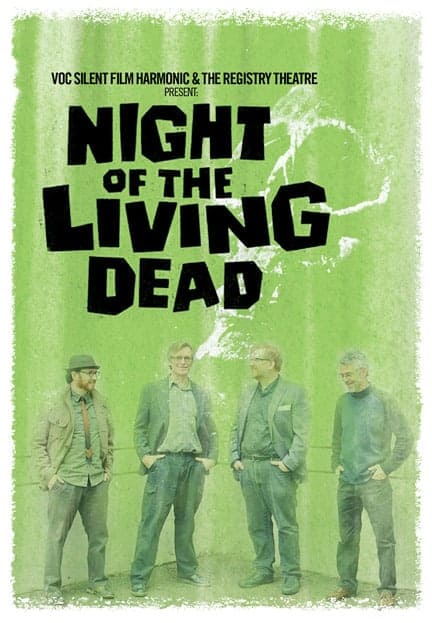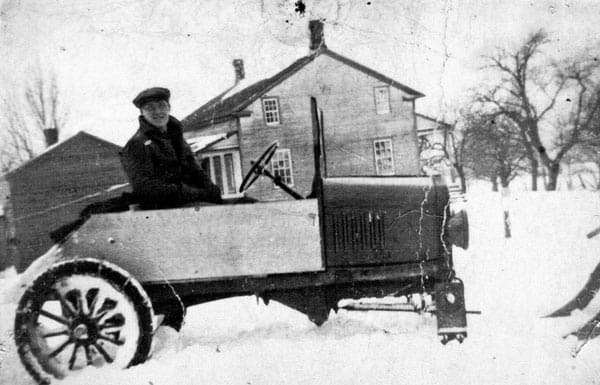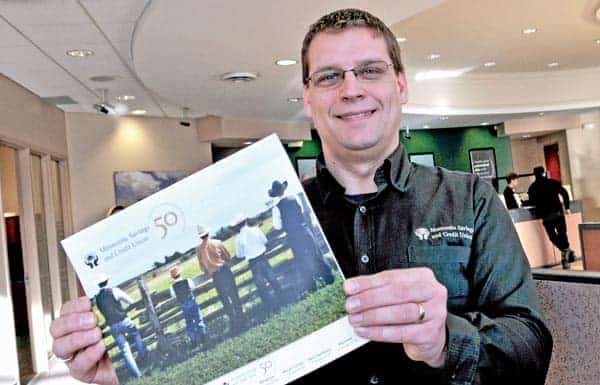VOC Silent Film Harmonic accompanies screening of Night of the Living Dead at the Registry Theatre
When Roger Ebert went to see Night of the Living Dead (1968) at a matinee, he wrote that all but a few in the sold-out audience were children. “Horror films” – in the Vincent Price sense of the term – had long been favourites of pint-sized moviegoers, but George A. Romero’s low-budget zombie film was something else entirely.
![“They’re coming to get you, Barbara …” Bradford Nowak, Wade Whittaker, Ted Harms, and David Hunsberger are bringing music to the original zombie movie.[Collage by: Jake Stallard / The Observer]](https://www.observerxtra.com/content/images/wp-content/uploads/2014/01/Post_ARTS_LivingDead.jpg)
“I don’t think the younger kids knew what hit them,” Ebert wrote. “They’d seen some horror movies before, sure, but this was something else. This was ghouls eating people up – and you could actually see what they were eating. This was little girls killing their mothers. This was being set on fire. … I don’t think the younger kids really knew what hit them.”
Night of the Living Dead probably won’t get quite the same reaction when the VOC Silent Film Harmonic screens it at the Registry Theatre on February 1. Still, for bass player Ted Harms, the movie retains much of the primal power it had in its original context.
“By modern standards, this probably isn’t even half as gory as some of the movies that are out there now,” says Harms. “But this was 1968 … this is one of those landmark years. Vietnam, race riots, political assassinations, the civil rights movement, and right in the middle of that you have a movie like this.”
Writer/director George A. Romero and the film’s principal creative team were Pittsburgh advertising and television veterans (most of them worked on the Mr. Rogers show!) who hoped that their $100,000 exploitation film would be a ticket to Hollywood. They were also young leftists, angry over the escalating Vietnam War and sociopolitical conflicts at home.
While later Romero zombie movies like Dawn of the Dead would explicitly foreground politics, 1968 is just simmering under the surface of Night of the Living Dead. In the farmhouse where the human characters struggle to survive the zombie apocalypse, the leader – and most sensible character – is black, with no comment made on his race. Government bureaucrats are shown as clumsy and ineffective, unable to reach a consensus as to how the plague has started. The militiamen who hunt down zombies look uncomfortably like lynch mobs, and the unforgettable final scene was bleaker than American horror films had ever dared.
“They put an African American in the lead role, which to some people in 1968 would have been scarier than zombies,” laughs Harms. “The last five or ten minutes are just not what anybody was expecting. Everybody goes in saying, ‘Zombies, ahaha, eating people,’ and then at the end …”
No need to spoil the surprises, but the still images that accompany the closing credits are like a kick in the gut. “There were photographs that people were seeing of the race riots and Vietnam, of people being killed for no reason or for being in the wrong place at the wrong time,” says Harms.
The VOC Silent Film Harmonic, which normally accompanies silent cinema, is playing Night of the Living Dead with the sound off and the subtitles on – an experimental approach they hope will emphasize its stark, black-and-white imagery.
“Musically, we’re trying to consciously take it in a 1968 direction,” says Harms. “We’re trying to work in a little bit of rock, a little bit of blues, a little bit of psychedelia.”
He continues, “1968, even the year in music: Led Zeppelin formed, and you had Pink Floyd, Motown, the British rock invasion, there was so much going on musically.”
The dead will rise at the Registry Theatre (122 Frederick St., Kitchener) on February 1 at 8 p.m. Tickets are $15 at centreinthesquare.com and at the door, $10 with a food bank donation, and $5 for eyeGO tickets. More information is available online at www.registrytheatre.com.









